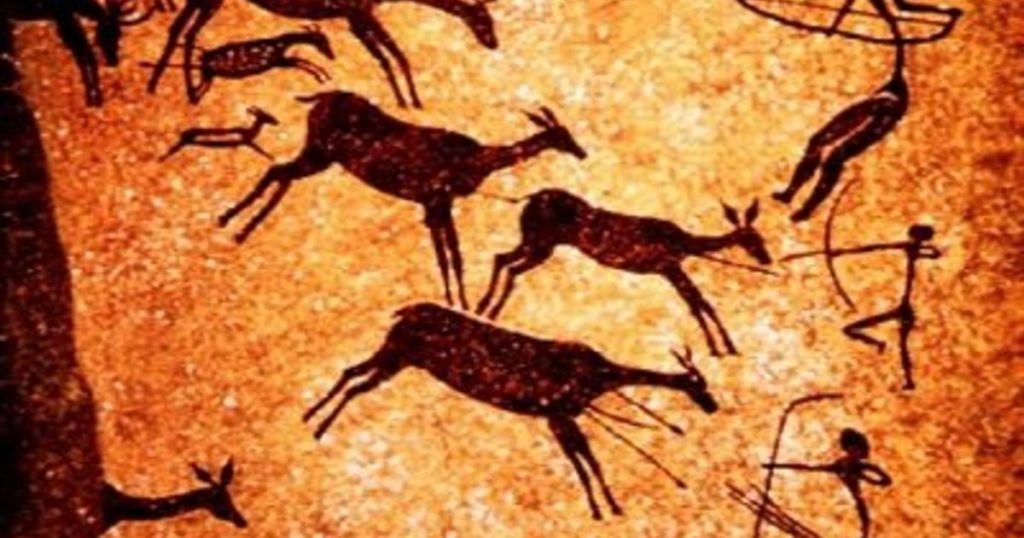In the previous post, it was demonstrated that across mammalian species, the energy composition was uniformly weighted towards fats. Here, we further explore other pieces of evidence that elucidate what exactly should we be eating.
Areas we can investigate: The physiological metabolic constraints and stable isotope analysis of early ancestors.
Expensive tissue hypothesis
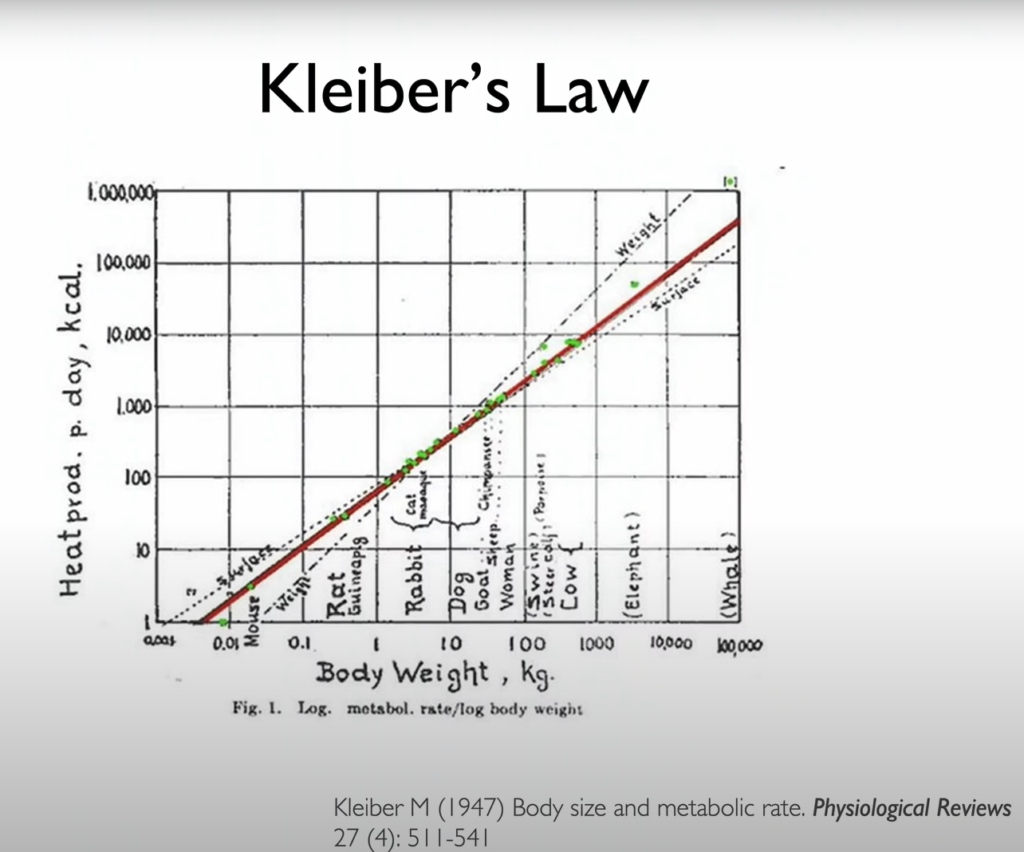
Kleiber’s law describes the amount of energy an organism would need for its general size designated by a quotient which can be applied to individual organs. Based on this law, it can be calculated how much energy a particular organ would need for a given weight of an animal. Below is that calculation for a human and the actual observed energy allocated.
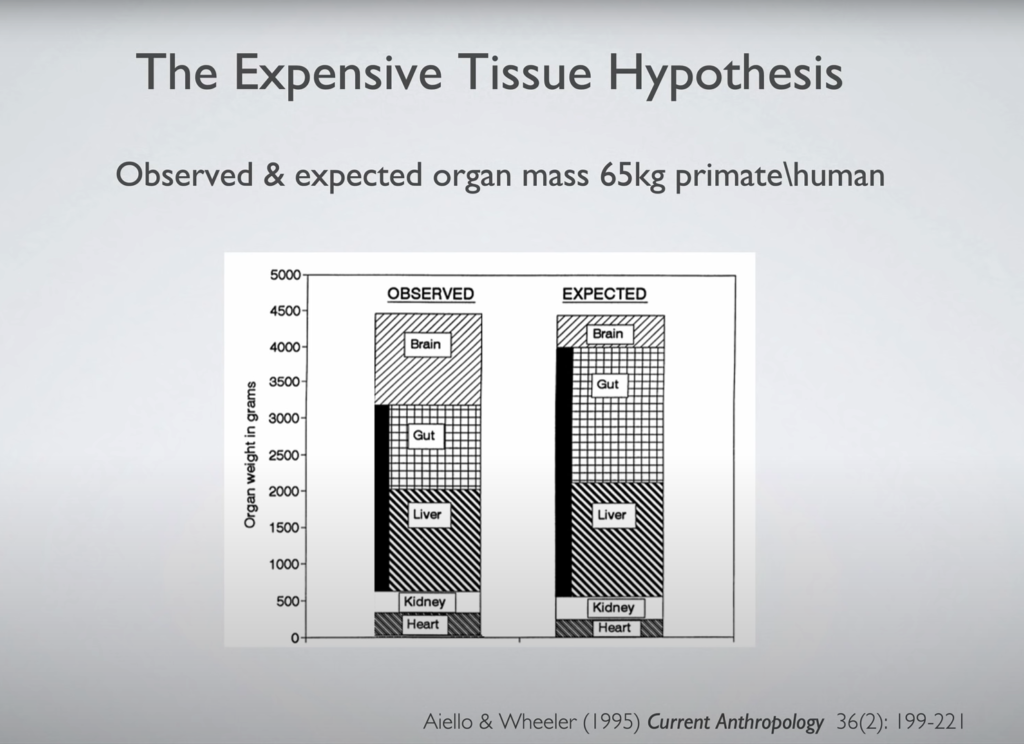

The gut size varies to offset the cost of a brain. Gorillas are the only great ape that eat an herbivorous diet and they have a brain that is 1/3 of expected for their size. Herbivores eat a difficult-to-digest diet, so they must have a gut relatively large in size that contain fermenting chambers and a constant supply of plant material to sustain their energy needs.
Whereas carnivores eating nutrient dense foods(fat, meat) have simple stomachs with reduced colon size and a relatively longer small intestine. Our colon only makes up 20% of our GI tract which is just over half of what would be expected for a primate our size, while our small intestines make up 60% of our GI tract.
Chimps have a colon that makes up 52% of their gut, which is specialized for fermentation and producing SCFA from plant biomatter.
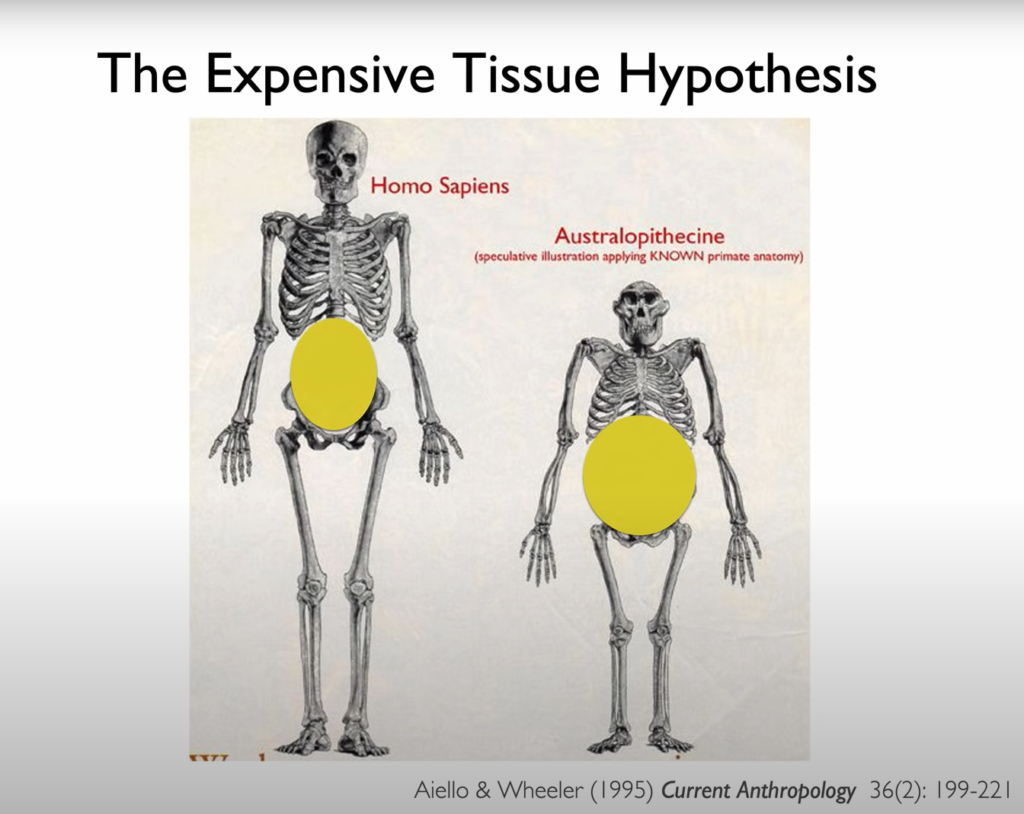

So, we are unique in the fact that we have a reduced gut size for a much larger brain. We could have only made that tradeoff by eating an energy dense food source either in carbs or fat. Certainly, back then we did not have access to the mass refinery of carbohydrates we have in the modern era, so that logically only leaves fats.
Now wait a minute, wasn’t it because of fire and cooking?
Cooking with fire was certainly a convenient innovation for our relatively recent evolutionary journey, but it wasn’t as central to our development as most tend to believe.
Early hominids would break skulls and long bone to access the brain and marrow fats hidden inside with a percussive instrument(typically a rock). This was what took humans to the next level of fat nutrient acquisition. By accessing these previously unavailable dense sources of fat, hominids were able to consume incredibly energy dense foods that required very little work to digest. Freeing up bandwidth from the gut to be allocated to the all important brain.
Readily available 20 and 22 carbon fatty acids (AA, DTA, EPA, DHA) that are essential for brain development – found only in animal foods. These fatty acids make up over 90% of brain matter. The longest chain in vegetable oils – linoleic acid are 18 carbon fatty acids. This focus on animal foods was likely what gave rise to our larger brains in the distant past.
Stable isotope analysis
Another way we can look at the problem is by evaluating C3, C4, C12, C13 and N14, N15 levels in bones.
Particularly, higher conc. of N15 indicates carnivory much like the way mercury concentrates higher up the food chain.
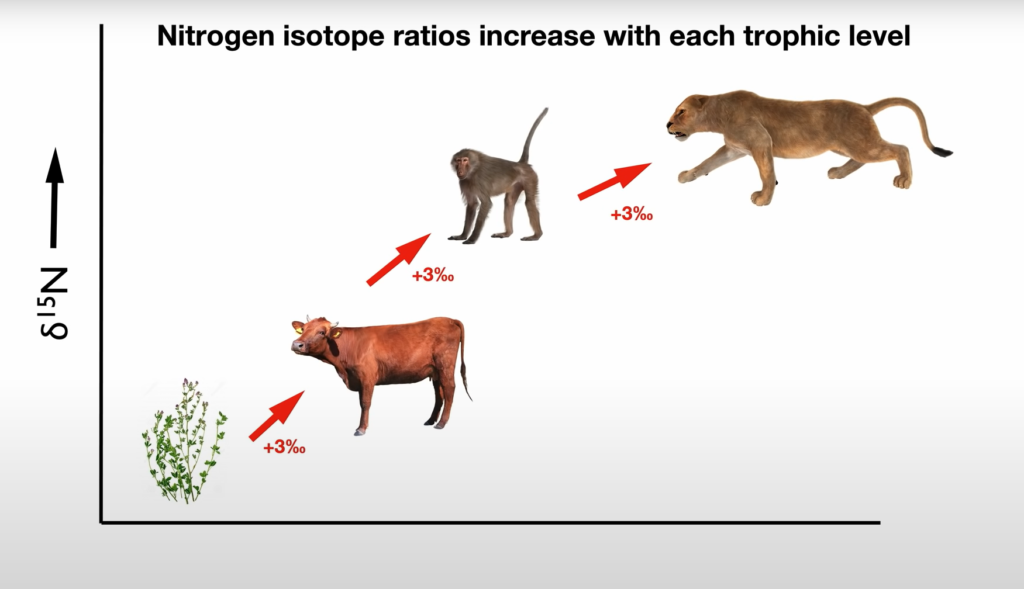

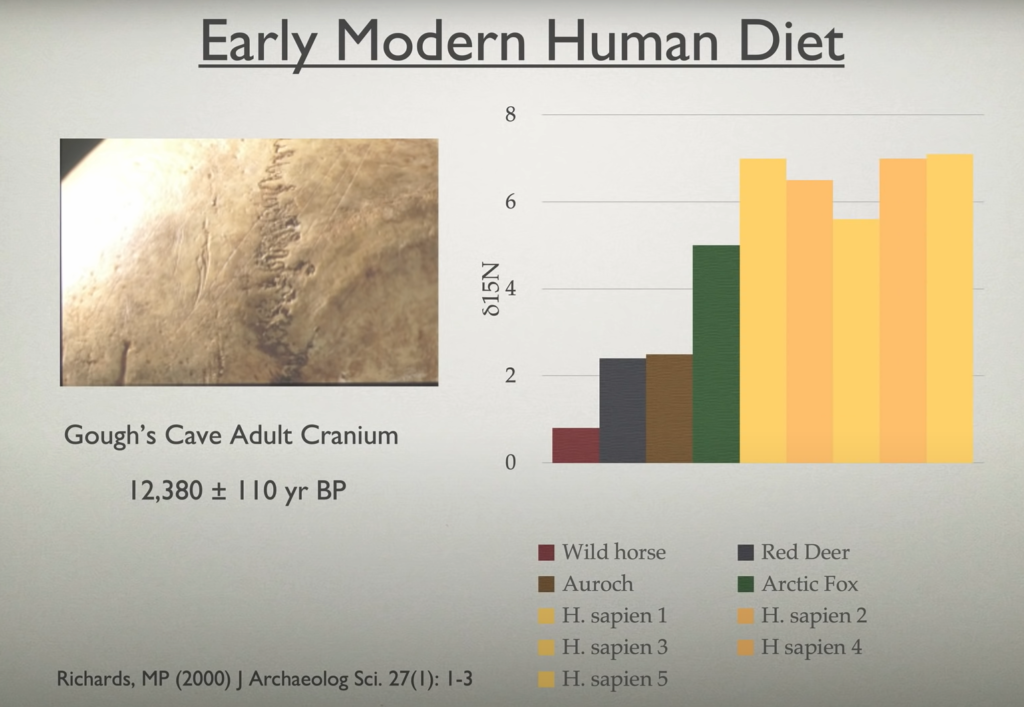
TL;DR
We evolved because of our almost exclusive access to fat as nutrient source. When we developed agriculture, we established a steady and scalable but nutritionally inferior food source, leading to the decline of our brain size. Evidence from paleontology points toward the fact that our brains evolved from decreased energy allocation to the gut, leaving the surplus to invest into in brain size and power. Our decreased gut size could not have possibly harvested enough energy from plant matter to be able to compensate for such an expensive brain even with the advent of cooking. It is because of the high energy density of fat and its unique properties that allowed for the development of such an expensive brain. This energy surplus came from the calorie dense fat available through bone marrow and the skull that would be accessed by stone percussion. The brain is primarily comprised of fat and other aspects of our biology are uniquely adapted to fat metabolism. So we have to fight back against the years of fear mongering over fat and animal products. Instead, we should embrace fat as our main source of energy again like our ancient predecessors once did to reach our true mental capabilities and optimal health.
Other Resources:
What made the Ancient Egyptians Fat and Sick?
Dr. Michael Eades – ‘Paleopathology and the Origins of the Low-carb Diet’
AHS12 Miki Ben Dor — Man The Fat Hunter: Animal Fat Shortage as a Driver of Human Evolution
AHS18 Miki Ben-Dor – Are We Carnivores?
CARTA: The Evolution of Human Nutrition — Mary C. Stiner: Archaic Human Diets
CARTA: The Role of Hunting in Anthropogeny: Briana Pobiner – The Ecology of Hominin Scavenging
CARTA: The Role of Hunting in Anthropogeny – Margaret Schoeninger Alyssa Crittenden Richard Wrangham
Omnivore and Carnivore Nutrition Video
Papers:
[1]Hawks, J., “Selection for smaller brains in Holocene human evolution”, arXiv e-prints, 2011.
